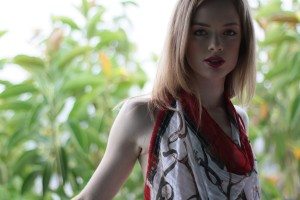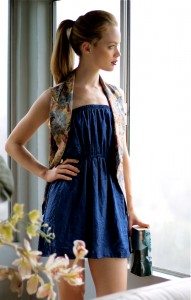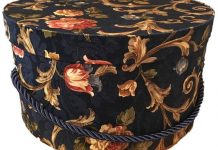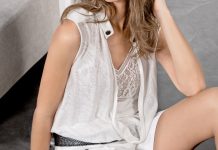An Eco Fashionista Excavates Old Looks in New Styles For The Best Eco-Friendly Vintage Alternatives

By Dow-Yung Kou, LuxEco Editorial Assistant
Dear Eco Fashionista,
I can’t help but to be troubled with the shift in our buyer mentality in the apparel industry. It seems we have become more concerned with keeping up with style trends at an affordable price, than the wellness of our people and the environment.
Disposable clothing has become the new “it” thing in fashion. Cheap and stylish is the new chic. The modern fashionista is more likely to opt for the synthetic fabrics than the organic cottons. Styles a few month old are thrown out to make space for the new trends in our closets. I am guilty of it too. I love clothes far too much, but what happens to our world because of this insatiable want? Can we be both eco-conscious and fashion forward at the same time?

There are many high-end eco-conscious alternatives, such as bamboo silk, organic cotton, non-toxic color dyes, but like most other eco-friendly products, they come with a high price. It’s nice to have one or two special pieces made by incredibly talented eco designers such as Emily Factor or Kristinit, but for everyday wear, we need something a bit more affordable, while maintaining style. Being environmentally responsible doesn’t have to be just for the financially privileged. Amidst the luxury alternatives, there is a more affordable way that can be just as eco-friendly. It goes by the name of vintage, and its style exudes timelessness.
Vintage is a very affordable eco-alternative, because it is giving clothes a second life, while reducing the amount of waste both during production and post-consumption. What it boils down to is good old fashion recycling. An average American throws out 65 pounds of clothing a year, and cumulatively as a country we add 11.8 million tons of clothes to landfills a year. By buying vintage, we are sparing the clothes from being tossed. Because of the need for mass production at cheap prices, the industry has come up with a plethora of chemical created fibers and dyes for wrinkle-free, color stay, soft fabrics at affordable prices. The production of these fibers is both harmful to the consumer as well as the producers. The use of toxic dyes and mysterious blended fabrics pollutes areas around factories. Often times, the waste products of the dyes find their ways to the ocean and disperse into the environment around the factories. Also, the carcinogens in the chemically produced dye’s and fibers pose a threat to the consumer health. Buying vintage reduces the amount of these toxins being produced.
Arguably, today’s fashion is just recycled trends. If you shop vintage wisely you can create a long lasting modern closet. I define a “modern fashion aesthetic” as one that is tailored to a worldly individual who is timeless in their outlook and style. From a design perspective, vintage is not a “faddy” contemporary approach, rather it meets my requirement as a modern approach to fashion. A good vintage article of clothing can be a staple in your closet for years to come, where as a trendy garment made today will be disposed of in a few months.
This is in large part because of the end of the Multi-Fiber Arrangement (MFA) of 1974 that gave birth to synthetic fabrics coupled with the end of the MFA in 2005, that with the end of quota’s on textile exports to developed countries, opened the flood gates of disposable clothing in the apparel industry. The affordability of clothes allowed fashion lovers to change their closets every season. But with this new liberty comes eco-consequences. When buying clothes we should consider what we need rather than what we want, and how long can this item last. After asking these questions, I always end up buying vintage. Cheap synthetic fabrics that are environmentally detrimental and damage after a few uses are simply incomparable to the whole fabrics that are used in most fabrics pre-1974.
Vintage is a solution to the eco issues surrounding the apparel industry, while also allowing individuality through creativity. For people who are constantly marketed individuality it is truly ironic the lack of individuality in fashion. Most people who consider themselves “fashion forward” fit themselves into prescribed style. A vintage shopper, however, is able to discover her personality through the clothes she picks throughout the periods of our history without having to fit into the fashion trends today. Apparel that is accessible now is not trendsetting but rather trendy for today and “so yesterday” tomorrow. This is partially because clothing has become disposable but also because fashion has slowed in creativity and instead become a pastiche of past trends.
A true fashionista finds originality in the sea of redundancy. It is a myth that in order to be considered fashion forward, you have to fit yourself into a certain look and style. Fashion is not a dictatorship, be brave and bold with your style and find what flatters you! Every fashionista is also an artist, her body is her canvas, and she paints her emotions and wears them literally on her sleeve. Her style exudes her direction in life, her dreams, her emotions, and makes a lifestyle statement. By adding vintage to her closet, she is introducing a whole new realm of originality, while also making a statement about her eco-lifestyle.
Sincerely Yours,
Fellow Eco Fashionista
All photography by Christina Corrine
Make-Up Artistry by Bethany Colson
Fashion Styling by Shelton Cheeks and Dow-Yung Kuo
Model: Jessica Spotts, Brittany Tatiana Weaver and Sahar Ghaffari
[imagebrowser id=19]















